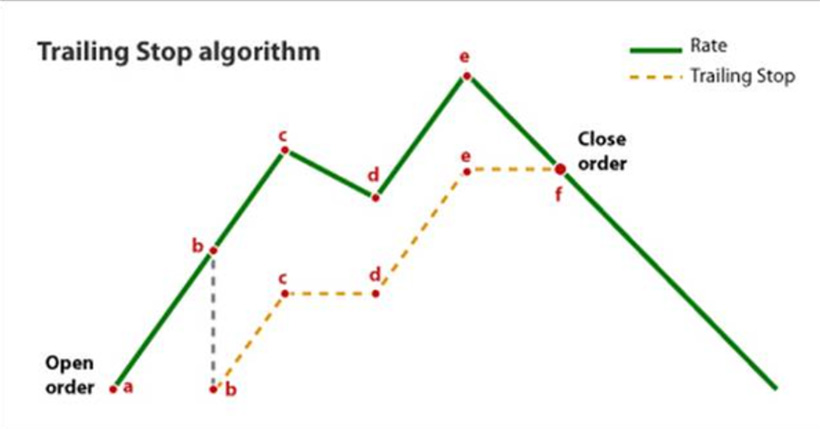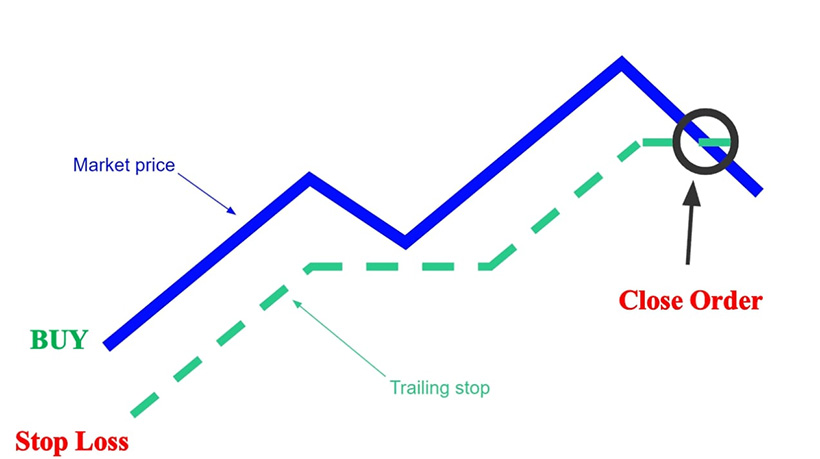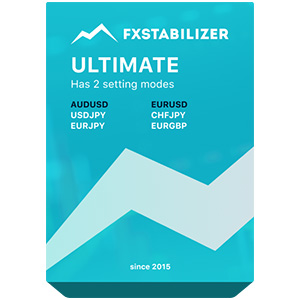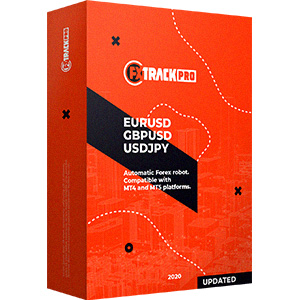
A Forex trailing stop is an order that automatically adjusts based on price fluctuations, helping traders manage risks and effectively protect their profits. This strategy is best suited for a market with high volatility as it is dynamic, flexible, and adaptive, allowing for profit-taking as asset prices rise while also safeguarding traders from losses if prices sharply decline. However, this tool comes with advantages, certain peculiarities, and pitfalls that traders should be aware of to trade effectively.
So, let's delve into what is trailing stop in Forex trading, how to use it, and how to minimize potential risks. Remember that you can practice on demo accounts at the beginning while entrusting actual trading to the best Forex robots. These robots will execute trading operations based on a programmed scenario, implementing strategies that have already been tested in practice.
What is trailing stop loss
The essence of what is trailing stop loss in Forex lies in the system automatically adjusting the stop price if the market moves in a favorable trend for you. In practice, it works similarly to a regular stop-loss, but here, you don't need to manually set its level. Instead, with the use of Forex trailing stop loss, the trade continues to gain in price, but it also automatically closes as soon as a market reversal is observed, and the movement starts to go in an unfavorable direction for this order. The stop order is set at a certain percentage of the price or a specific amount.
In this way, the Forex trailing stop loss strategy guarantees that, one way or another, you will secure profits regardless of the market dynamics.
Mechanics of Trailing Stops

To understand how does trailing stop work in Forex, it's essential to identify the key features of this tool:
- The trailing stop price is set as a percentage of the order or as a fixed amount.
- The trailing stop is specified in points or percentages, indicating how much it will trail behind the market price.
- The trailing stop is always slightly below the current market price.
- The stop price increases as the market price rises, allowing for potential profit expansion, but the trailing distance remains constant.
- In a downtrend, the stop price remains static.
- If the market price falls to the trailing stop level, the order is automatically closed.
Thanks to these features, trailing stop in Forex trading is suitable for both bullish and bearish scenarios.
What does it look like? Here's a simple Forex trailing stop loss example: You are trading the EUR/USD pair and set a trailing stop of 50 points for an asset price of $12,000. Let's say the market price of your asset rises to $12,100. In this case, the trailing stop will move up by 50 points (trailing 50 points behind the market price) and will be at $12,150. Once the market price moves against you by 50 points, the order will be closed.
Benefits of Trailing Stops
Now that we've understood how to trail stop loss in Forex trading, let's explore the real advantages of using this strategy:
- The most significant reason to try it out is excellent profit protection and limiting potential losses. This dynamic approach is optimal for highly volatile markets.
- The process of adjusting stop-loss levels occurs automatically, so you can be confident about the trading process. The risk of losing profits due to carelessness is significantly reduced.
- This trading style is built on discipline and numbers, eliminating the influence of emotions and the risk of losing profits due to impulsive decisions.
- There is no additional fee for using this tool.
Implementing Trailing Stops in Forex Trading
The main challenge is to correctly determine the trailing stop distance so that it does not react to normal price fluctuations but triggers real, adverse price retracements for you. To achieve this, experts recommend studying a particular asset and its dynamics several days in advance.
Factors to Consider When Using Trailing Stops in Forex Trading
Here are some important points you need to know:
- The more volatile the trading pair, the wider the trailing stop should be.
- Your timeframe matters, as shorter timeframes require tighter stops compared to longer ones, where various fluctuations can be observed.
- If you are using a trend-following strategy, longer trailing stops will protect you from exiting early, while scalping strategies require stricter stop orders.
- Consider support and resistance levels and set the trailing stop below or above them, which will also protect you from premature exits.
Also, don't forget to monitor the market and economic news, as this will give you a better understanding of the trend's direction and potential price reversals and enable you to use this tool to your advantage.
Limitations and Risks
Despite the many advantages of Forex trailing stop orders, traders still face various risks even when using this tool.
- Stop-loss orders are known not only to you but also to other market participants. They can cause the price to change sharply and trigger your position. Afterward, they may reverse the price. This scenario can deprive you of potential profit.
- Setting a rigid stop-loss order can force the trade to close (just like in the case of temporary price pullbacks).
- Sometimes, due to technical reasons, stop orders are not executed in a timely manner.
- Traders risk relying too heavily on the effectiveness of trailing stops instead of monitoring market dynamics and occasionally foregoing this tool when it may be a more profitable decision.
Combining Trailing Stops with Other Strategies

The most successful approach is combining it with a stop-loss. This helps during active trading, such as in the first hours of the workday. This way, you eliminate the emotional component and make decisions solely based on static information. It helps prevent significant losses and get more from each trade. Working together, the two types of stop orders allow for refining the trading strategy, offering the least risky way to execute market operations.
You can also combine trailing stops with Bollinger Bands since this tool also provides clear signals of when to exit a trade with maximum profit.
The Bottom Line
Now that you know how trailing stop works in Forex, you can use it for highly effective risk management and emotion-free trading. This tool also provides you with more freedom and free time that you can utilize for learning, market research, and using additional instruments. This way, your trading becomes even more successful, mitigating the drawbacks of market volatility. However, it still requires your vigilance, monitoring market conditions, and setting appropriate trailing distances. Understanding the advantages and knowing how to deal with the limitations of this tool allows you to use it to its maximum potential and achieve success.









